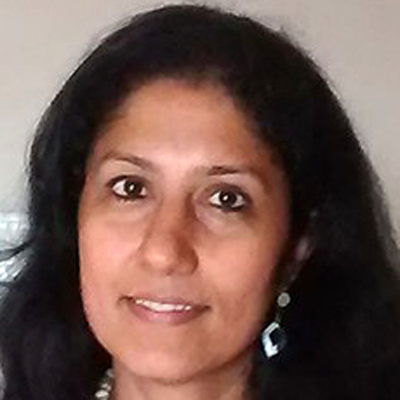The chronic underfunding of nonprofits’ administrative and operational costs acts as a brake on their ability to grow and reach more communities and individuals in need. “There is almost systematic deprivation of nonprofits in terms of funding management costs,” said Anant Bhagwati, director of capacity building at Dasra, a strategic philanthropy organisation.
In some of our stakeholder consultations, we heard that many funders fear that money not restricted to covering programme costs may not contribute to impact. Yet, a number of nonprofits demonstrate the contrary. They have shown how adequate funding for essential non-programme costs—such as strategy, leadership development, and financial management—actually builds stronger, more resilient organisations with greater capacity to deliver impact to their constituents.
Without adequate non-programme funding, it is no wonder that nonprofits are ‘perpetually subscale’.
Quality Education Support Trust (QUEST)—a nonprofit focussing on early childhood education—serves as an example. In 13 years, the organisation has evolved from a small, grassroots start-up to successful purveyor of educational enrichment experiences for more than 260,000 underserved children across 24 districts in Maharashtra. It could not have achieved this level of success without funders willing to invest in building its organisational capacity to manage a greatly expanded operation.
Without adequate non-programme funding, it is no wonder that nonprofits are ‘perpetually subscale’ according to one nonprofit leader. The funding shortfall takes a toll on three non-programme categories:
- Indirect costs associated with shared administrative or support functions
- Capacity-building expenses associated with organisational growth
- Reserves to cover cash shortfalls and fund innovation
Advocates for changes in funding practices have been hindered by what several Indian funders call ‘a serious shortage of evidence’. To address this shortage, The Bridgespan Group conducted a survey of 388 nonprofits representative of the sector as well as a financial analysis of 40 leading and relatively well-funded nonprofits. Our survey and financial analysis mark the first stage of a newly launched, multi-year Pay-What-It-Takes (PWIT) India Initiative co-led by Bridgespan and five anchor partners: ATE Chandra Foundation (ATECF), Children’s Investment Fund Foundation (CIFF), EdelGive Foundation, Ford Foundation, and Omidyar Network India. These partners have committed to collaborative action to change practices and mindsets of funders and other stakeholders to build stronger, more financially resilient nonprofits in India. Our research revealed a clear pattern of the systematic deprivation identified by Bhagwati.
Here are some key highlights of what we found:
- No single indirect-cost rate fits all nonprofits. The financial analysis found that indirect costs such as office rentals, management salaries, and fundraising expenses range from five percent to 51 percent of the nonprofit’s total costs. This varied depending on a nonprofit’s mission, operating model, and other characteristics, and averaged 19 percent across organisations. Yet 68 percent of grants the nonprofits received over a three-year period allocated less than 10 percent for indirect costs.
- Only 18 percent of the survey respondents said they invest adequately in organisational development, which is fundamental to scaling impact.
- The COVID-19 pandemic caused nonprofits to dip into their reserves, leaving 54 percent of the organisations surveyed with less than three months of reserves as of September 2020.
- Certain nonprofits face greater challenges than others. For instance, 70 percent of nonprofit organisations led by members of the Dalit, Bahujan, or Adivasi (DBA) communities have not reported any operating surplus in the past three years, compared to 45 percent for non-DBA-led nonprofits. Similarly, 61 percent of non-metro and rural nonprofits reported fewer than three months of financial reserves, compared to 51 percent of organisations based in India’s eight major cities.

While the social sector continues to operate under a restrictive regulatory environment, adoption of good practices by funders as well as nonprofits can help improve the trust and transparency needed to achieve greater impact. Our research and interviews with sector leaders led us to identify four best practices that hold promise to set funders and nonprofits on a new path.
1. Develop multi-year funder-nonprofit partnerships
A commitment to longer-term partnerships based on aligned objectives builds greater, mutual trust between grantees and funders. As a result, both stop viewing grants as transactional arrangements, and can focus on all the elements required to deliver higher impact.
2. Close the indirect-cost funding gap
Closing the indirect-cost funding gap will require funders to change the way they think about grantmaking—something nonprofits can facilitate by clearly communicating their needs. For funders, this means training their own employees and engaging nonprofit leaders in conversations about their specific mission, operating model, and needs, rather than relying on low, fixed indirect-cost rates as a substitute for true costs.
3. Invest in organisational development
Nonprofits typically pay for organisational development out of unrestricted funds, but such funding remains relatively scarce. Funders can communicate to grantees that they understand the importance of building strong organisations and are willing to provide the necessary financial support. Nonprofits benefit by sharing an assessment of their organisational development needs, and what those needs will cost in the short and long term.
4. Build financial reserves
When feasible, funders should invest directly in strengthening a grantee’s unrestricted operating reserves. They should encourage nonprofits to generate operating surpluses that can be transferred to reserves. Nonprofits should report key metrics, such as operating surplus and months of reserves to funders and their boards, to emphasise the importance of building financial resilience.
Chronic underfunding undermines the very social and environmental impact that funders and nonprofits strive for.
Chronic underfunding undermines the very social and environmental impact that funders and nonprofits strive for. Pursuing a path toward true cost funding will require patience and perseverance to overcome ingrained attitudes and practices. This is a complex, systemic issue, and all stakeholders need to work together to solve it. But funders hold the purse strings and should take a lead in initiating action.
Those that already have adopted less restrictive funding practices have seen how organisations, like QUEST, can benefit and achieve improved outcomes towards their social mission. Moreover, our research findings argue powerfully that it is time for funders to ensure that nonprofits have the resources they need to build the organisational strength and financial resilience needed to help solve some of society’s most pressing problems. The status quo serves no one well.
—
Know more
- Learn more about the nonprofit ‘starvation cycle’ that prevents organisations from maximising their impact.
Do more
- Connect with the author Pritha Venkatachalam to learn more about her work.






